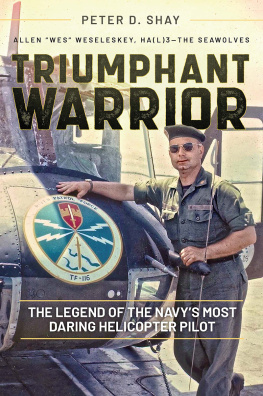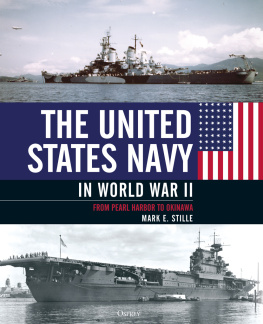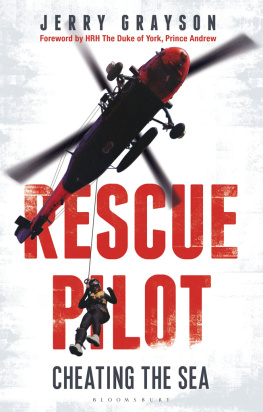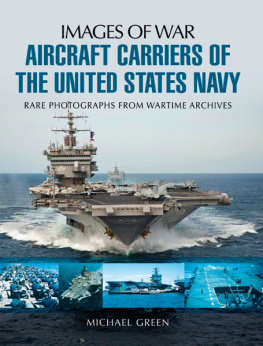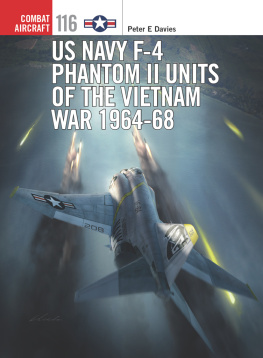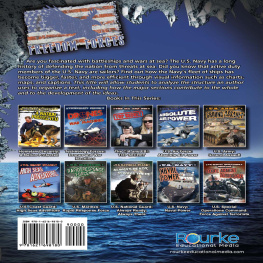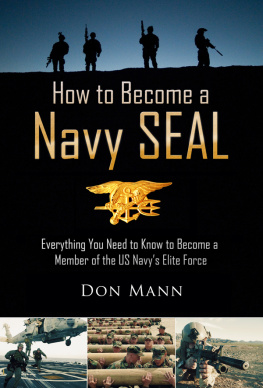Pagebreaks of the print version

TRIUMPHANT WARRIOR
The Legend of the Navys Most Daring Helicopter Pilot
Peter D. Shay

Published in the United States of America and Great Britain in 2019 by
CASEMATE PUBLISHERS
1950 Lawrence Road, Havertown, PA 19083, USA
and
The Old Music Hall, 106108 Cowley Road, Oxford OX4 1JE, UK
Copyright Peter D. Shay, 2019
Hardback Edition: ISBN 978-1-61200-763-2
Digital Edition: ISBN 978-1-61200-764-9 (ePub)
Mobi ISBN 978-1-61200-764-9 (Kindle)
A CIP record for this book is available from the British Library
All rights reserved. No part of this book may be reproduced or transmitted in any form or by any means, electronic or mechanical including photocopying, recording or by any information storage and retrieval system, without permission from the publisher in writing.
For a complete list of Casemate titles, please contact:
CASEMATE PUBLISHERS (US)
Telephone (610) 853-9131
Fax (610) 853-9146
Email:
www.casematepublishers.com
CASEMATE PUBLISHERS (UK)
Telephone (01865) 241249
Fax (01865) 794449
Email:
www.casematepublishers.co.uk
Front cover: Weseleskey standing by a UH-1B helicopter. (Courtesy of A. E. Weseleskey)
Back cover: Vinh Long runway. (Courtesy of A. E. Weseleskey)
MANHOOD
A MANS USEFULNESS DEPENDS UPON HIS LIVING UP TO HIS IDEALS INSOFAR AS HE CAN.
IT IS HARD TO FAIL BUT IT IS WORSE NEVER TO HAVE TRIED TO SUCCEED.
ONLY THOSE ARE FIT TO LIVE WHO DO NOT FEAR TO DIE AND NONE ARE FIT TO DIE WHO HAVE SHRUNK FROM THE JOY OF LIFE AND THE DUTY OF LIFE.
Theodore Roosevelt
Preface
When I set out on this journey, I was determined to pen a biography of a naval aviator whose personal pride, naval career, and future life were profoundly impacted by a singular helicopter mission. However, on discovering that he was also an integral part of a unique ground battle that has not received much historical recognition, I decided to explore what happened in the early morning hours of January 31, 1968. I then interviewed as many participants as possible (including Army personnel) who engaged the enemy during the Tet Offensive Battle at the Army Airfield located at the Mekong Delta town of Vinh Long. For many reasons, this battle was historic, but what stood out most were the successful efforts of brave Navy aircrew personnel, who although not trained as infantrymen, helped repel a large ground force of Viet Cong fighters, whose goal was the overthrow of the base.
While the bulk of this book was written more than ten years ago, the story told will always be relevant to those of us who not only appreciate naval aviation and heroism on the field of battle, whether it be on the ground or in the air, but also see an obligation to give credit to those who fought for our country. The culmination of this book represents a historical account that should have been told long ago. I take full responsibility for how much dust it gathered before I had the personal wherewithal to pick it up again. As I view it in retrospect, I could say that due to a variety of circumstances and reasons it was put off; but to be more straightforward with readers and with myself, the actual reasons why it was not published before now are as follows: I was, in fact, serving with the navy unit during the period in which the story takes place, and personally knew many of the individuals whose personal accounts can be found in these pages. I felt that I had a profound duty to honor their thoughts and feelings. At what I thought to be near completion, the emotional toll my sense of duty took upon me began to weigh too heavily. As I read and absorbed each witnesss account, I became more and more personally involved; and felt a greater level of responsibility to the importance of each word. Despite all the work I had already put into telling this story, not being certain I was doing it justice made setting it aside the better part of valor.
In that context, I must take a moment to apologize to my fellow veterans, those whom I interviewed and recorded and who were able and willing to piece together and share their deepest memories (and for some their darkest nightmares) of what took place 50 years earlier, in what now has become such a distant place, simply called Vietnam.
Even more regrettable is that more than a few important witnesses are gone now. They will never have the opportunity to read and appreciate their contributions to the completed work. Such warriors and people who gave to their country include: Eugene Rosenthal, Glenn Wilson, Tom Olezeski, James Walker, C. J. Roberson, Jerry Wages, Joe Bouchard, Chuck Fields, Sam Aydelotte, and others, whose names I may have missed but whose contributions are invaluable. These men have been and always will be part of the unique history of Helicopter Attack (Light) Squadron Threethe Navy Seawolves.
Several minor edits have been made, and nearly all the photographs shared with me have been given credits. I have done my best to refrain from writing with any particular bias, though it is difficult not to form an opinion as to the dynamics of what happened six weeks after the offensive when a unique and daring helicopter rescue mission ensued on March 9, 1968.
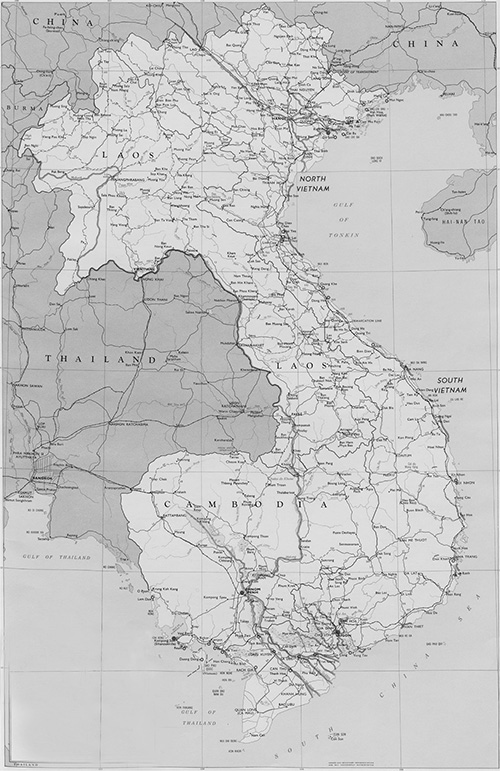
Vietnam. (Indochina Atlas. United States Central Intelligence Agency, Office of Basic Intelligence. Washington, D.C. 1970)

The Mekong Delta and Vinh Long area of navy operations. (Courtesy of U.S. Mapping Agency)
Introduction
Inherent in A Navy Flyers Creed is the power of inspiration: My country built the best airplane in the world and entrusted it to me. They trained me to fly it. I will use it to the absolute limit of my power. With my fellow pilots, aircrew and deck crews, my plane and I will do anything necessary to carry out our tremendous responsibilities.
When the going is fast and rough, I will not falter. I will be uncompromising in every blow I strike. I will be humble in victory. I am a United States Navy Flyer.
In Vietnam, barely a month after the start of the Tet Offensive in 1968, one such proud United States Navy flyer applied the fundamental but sometimes forgotten maxims expressed in this creed. And he dared to risk not only his naval career, but the lives of his fellow aircrewmen in rescuing a wounded U.S. Army advisor whose time had nearly run out and whose loss of blood meant that he was only moments away from certain battlefield death.
The pilot, Lieutenant Commander Allen E. Wes Weseleskey, had been assigned at the Vinh Long Army Airfield as the Assistant Officer in Charge of Helicopter Attack (Light) Squadron Three, Detachment Three (HA(L)3, Det. 3). His controversial mission took place on March 9, 1968 on the outskirts of Sadec, a small city in Kien Phuong Province in the Mekong Delta region of Vietnam.
To say that there was turmoil and chaos during this period would be a serious understatement. Unknown to the soldiers on the ground at the time, the sailors on the waterways, the pilots in the air, or the grunts in the hills, five months earlier in November 1967, Americas most prominent general was ordered to fly to Washington to brief the President on the progress of Americas war against the communists in Vietnam.

